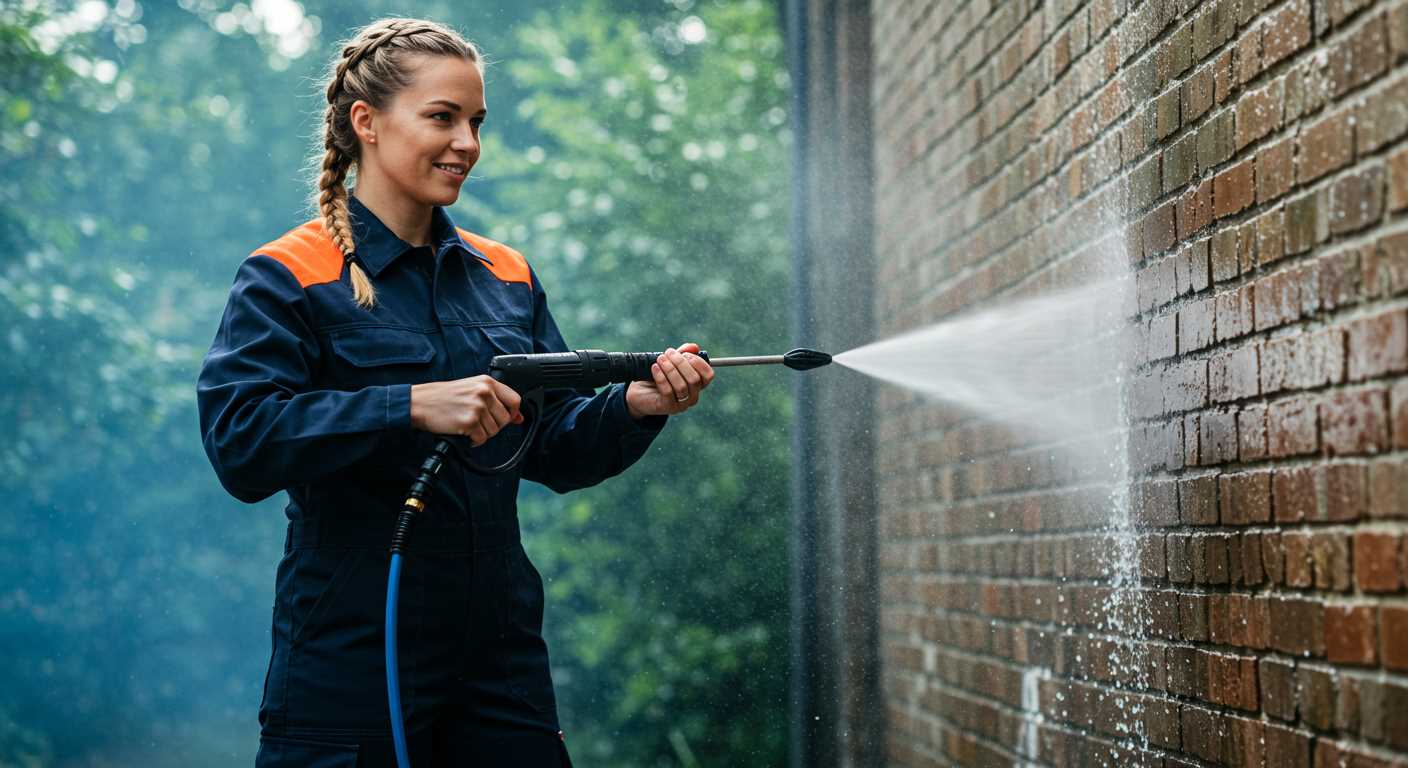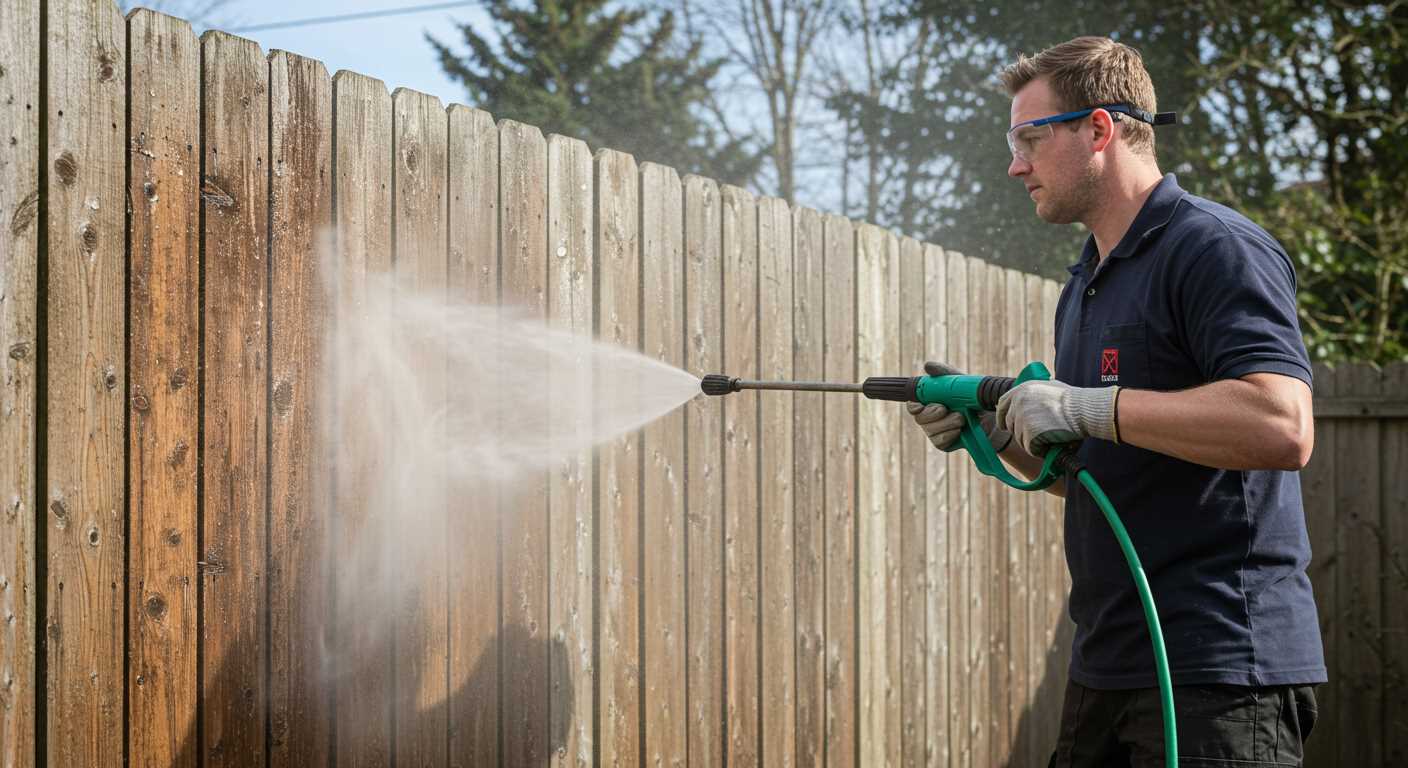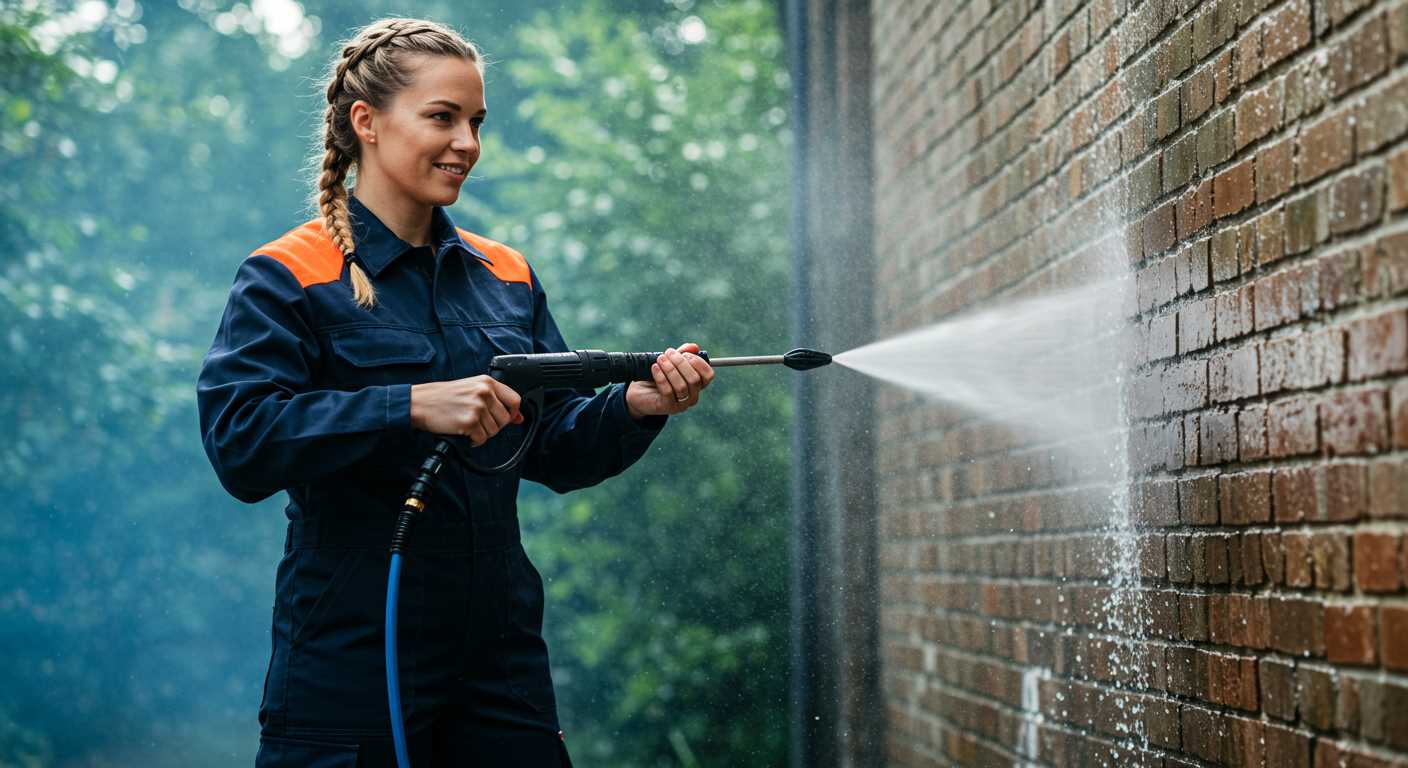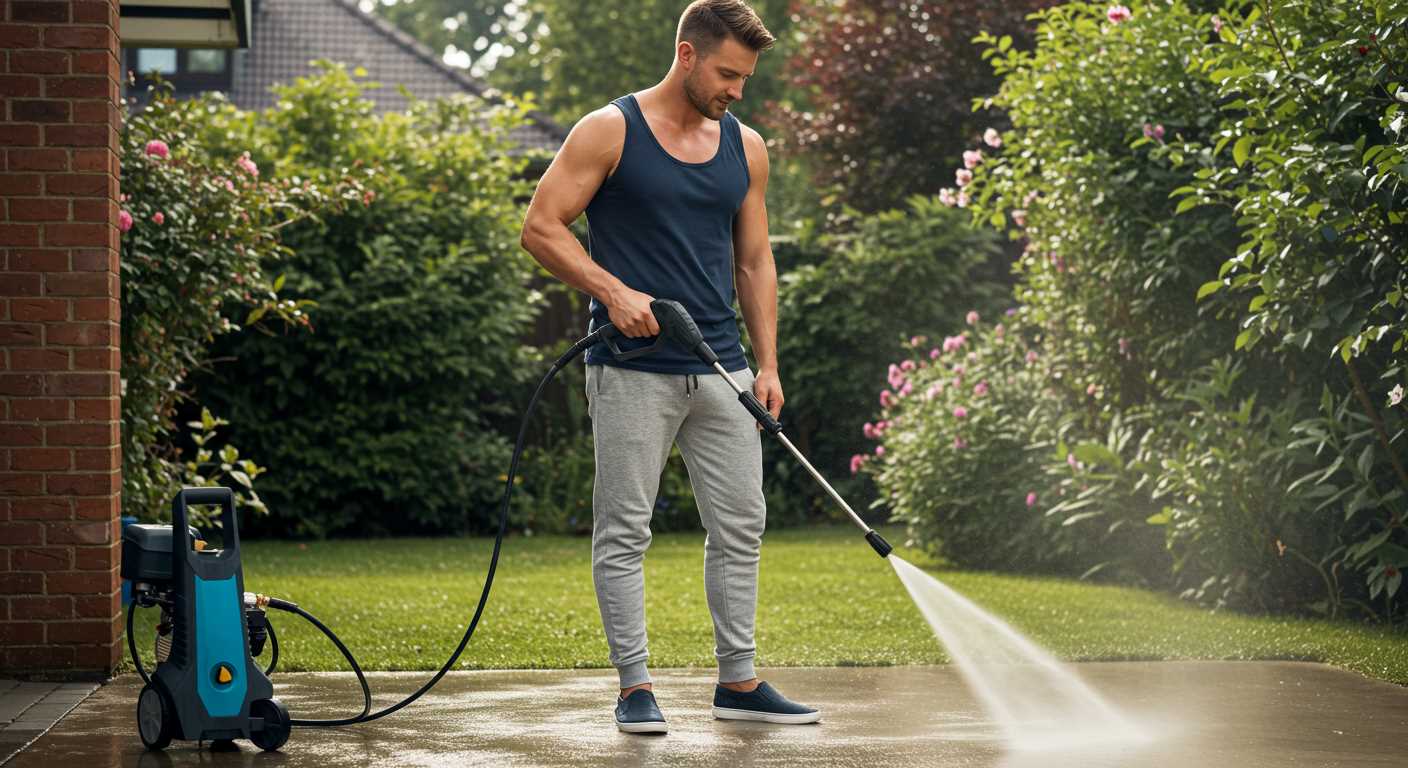




To truly grasp the functionality of high-pressure cleaning devices, one must examine the heart of the system: its hydraulic components. When I first began my journey in the cleaning equipment industry, I was fascinated by how these machines convert mechanical energy into powerful jets of water. A detailed schematic can be a game changer for anyone looking to troubleshoot or enhance their understanding of these tools.
Key components such as the motor, inlet valve, and outlet nozzle work in harmony to create high pressure. During my time testing various models, I often found that the quality of the seals and valves significantly impacts performance. For instance, a well-designed inlet valve ensures smooth water intake, preventing cavitation and wear over time.
Familiarity with these parts led me to improve my cleaning efficiency. I recall a project where I replaced a faulty outlet nozzle, which dramatically increased the force of the water stream. This not only reduced the time needed for cleaning but also enhanced the overall effectiveness of the task. Understanding the interplay between these components is invaluable for anyone looking to optimise their cleaning arsenal.
Understanding the Mechanics of a High-Pressure Cleaning Device
For anyone looking to grasp the inner workings of a cleaning machine, it’s crucial to focus on the heart of the system: the mechanism that generates the forceful stream of water. This component operates primarily through a series of interconnected parts, each playing a specific role. Let’s break it down.
Key Components and Their Functions
At the core of the mechanism is the motor, which drives the operation. When activated, it spins a crankshaft that converts electrical energy into mechanical energy. This movement is transferred to a piston via a connecting rod. The piston is housed within a cylinder, creating a chamber that compresses water as it moves up and down.
As the piston moves downward, it creates a vacuum that pulls water into the chamber. On the upward stroke, the water is forced out through a nozzle. The nozzle restricts the flow, increasing the pressure of the water significantly. This is where the magic happens–once the water exits the nozzle, it transforms into a powerful jet capable of removing dirt and grime from surfaces.
Understanding the Flow Regulation

Another essential aspect is the unloader valve. This component regulates the flow and pressure, ensuring that the device operates smoothly without causing damage to itself or the surfaces being cleaned. If the nozzle becomes blocked, the unloader valve redirects the water back into the inlet, preventing excessive pressure buildup.
Regular maintenance of these parts is vital. Over time, wear and tear can lead to decreased efficiency. I’ve seen machines that have been neglected lose their cleaning power and require extensive repairs. Keeping an eye on the seals and checking for leaks can save both time and money in the long run.
In my experience, understanding how these components interact can significantly enhance your approach to using the device. Knowing when to adjust settings or perform maintenance ensures you’re always ready to tackle any cleaning challenge.
Understanding the Basic Components of a Pressure Washer Pump
Focusing on key elements can greatly enhance your knowledge of these devices. Each component plays a specific role that contributes to the overall performance and reliability of the system.
Water Inlet and Filter
The journey begins with the water inlet, where the hose connects to the machine. A filter sits at this entry point, preventing debris from entering the system. I’ve seen many users overlook this part; a clogged filter can lead to reduced flow rates and even damage. Regular cleaning of the filter is essential.
Piston and Crankshaft
Next, the piston and crankshaft assembly is where the magic happens. The crankshaft converts rotational energy from the motor into linear motion, driving the piston. I once repaired a unit with a worn-out piston; the pressure output was drastically reduced. Ensuring these components are well-lubricated and free of wear can prolong their lifespan.
Understanding these components allows for better maintenance and troubleshooting. Regular checks can prevent minor issues from escalating into costly repairs.
Water Entry Mechanism: The Inlet Process
To ensure optimal performance, understanding how water is drawn into the appliance is crucial. The inlet valve plays a significant role in this process. When the motor activates, it creates a vacuum effect, allowing water from the source to be sucked into the unit through the inlet. This process is vital for generating the necessary flow and pressure.
Inlet Valve Operation
The inlet valve is designed to open and close at precise intervals. When the appliance is turned on, the valve opens, allowing water to flow in. As the motor runs, the valve closes once the water reaches a certain level, preventing backflow. This mechanism ensures a consistent supply of water, which is critical for maintaining the desired output.
Connection to Water Source
The connection to the water source must be secure to avoid leaks. Using a quality hose and ensuring proper fittings can prevent interruptions in water flow. I’ve seen many users overlook this aspect, leading to frustrating performance issues. Always check for kinks or blockages in the hose as well, as these can significantly hinder water entry. If you’re exploring electric pressure washer brands, make sure to consider models that highlight robust inlet systems for maximum reliability.
The Role of the Pump Cylinder in Pressure Generation
The pump cylinder serves as the heart of the high-pressure system, where the magic of pressure generation occurs. As water enters the cylinder, it’s subjected to a rapid compression process. The design of the cylinder is crucial; it must withstand high forces while allowing smooth movement of the pistons.
In my experience, the material and construction of the pump cylinder significantly influence performance. For instance, a cylinder made from high-quality alloys resists wear and corrosion, extending the lifespan of the equipment. Regular maintenance, including checking for any signs of wear or leaks, can prevent major issues down the line.
During operation, the piston moves within the cylinder, creating a vacuum that draws water from the inlet. This is where the magic happens; as the piston moves back and forth, it compresses the water, increasing its pressure dramatically. I’ve seen many operators underestimate the importance of this component, often leading to reduced cleaning efficiency.
To maximise performance, ensure that the cylinder is always clean and free from debris. A clogged cylinder can impede the flow and significantly reduce pressure output. From my testing days, I’ve found that even a small obstruction can lead to noticeable drops in effectiveness.
When considering additional cleaning tasks, the high-pressure output generated by the pump cylinder can be utilised for various applications, including surfaces like laminate floors. For tips on cleaning laminate wood floors effectively, check out this resource.
In conclusion, understanding the function and maintenance of the pump cylinder can greatly enhance the reliability and performance of your cleaning equipment. Investing time in this knowledge pays off in results.
How the Piston Mechanism Creates High Pressure
Understanding the piston mechanism is key to grasping how intense force is generated within these cleaning machines. The operation hinges on a simple yet brilliant design that utilises a cylinder and a piston to compress water effectively.
Here’s a breakdown of the process:
- Water Intake: As the piston retracts, water rushes into the cylinder through the inlet valve. This initial action sets the stage for compression.
- Piston Movement: When the piston moves forward, it creates a smaller volume within the cylinder. The reduction in space leads to an increase in water pressure.
- Compression Phase: As the piston continues its forward motion, the water is compressed further. This is where the magic happens; the pressure builds significantly, making it possible to blast away dirt and grime.
- Outlet Activation: Once the desired pressure is reached, the outlet valve opens. The high-pressure water is then forced out through the nozzle, delivering a concentrated stream capable of tackling tough stains.
My experience has shown that the quality of materials used in the piston and cylinder significantly influences performance. For instance, a well-crafted ceramic piston can withstand higher pressures and provide longevity compared to cheaper alternatives. I’ve noticed that many users underestimate the importance of regular maintenance, which can lead to wear and tear on these components.
Proper lubrication is another critical aspect. Ensuring the piston operates smoothly within the cylinder can reduce friction, leading to enhanced performance and a longer lifespan for the entire system.
In summary, the piston mechanism operates on fundamental principles of physics–compression and force. Understanding this can help users appreciate the engineering behind these machines and ensure they maximise their cleaning capabilities.
Exploring the Function of the Unloader Valve
The unloader valve is a critical component in any high-pressure cleaning system. Its primary role is to regulate the pressure within the system, ensuring that it remains safe and effective during operation. When the trigger is released on the spray gun, this valve redirects water back into the inlet, preventing excess pressure build-up that could damage the unit.
From my experience, a malfunctioning unloader valve can lead to significant issues. I once encountered a situation where a client reported inconsistent pressure levels. After some troubleshooting, it turned out that the unloader valve was stuck open, causing fluctuations in performance. Cleaning or replacing the valve rectified the issue, restoring reliable operation.
Adjustability is another feature that stands out. Many unloader valves come with a pressure adjustment knob. Fine-tuning this can help tailor the output to specific tasks, whether it’s light cleaning or tackling stubborn grime. I recall a project where I had to switch between different surfaces. Adjusting the unloader valve allowed me to optimise the pressure for each task, ensuring effective cleaning without damaging delicate materials.
Regular maintenance of this valve is essential. During routine checks, I recommend inspecting for wear and tear, as well as ensuring that the spring mechanism is functioning correctly. A simple test involves checking for leaks or unusual sounds when the machine is running. Early detection can save time and costly repairs down the line.
In conclusion, the unloader valve is more than just a safety feature; it’s a vital part of achieving peak performance from your cleaning system. Understanding its function and maintaining it properly can significantly enhance your experience and results.
Regulating Water Flow with the Switch
The switch plays a pivotal role in controlling the water flow in high-pressure systems. When the unit is activated, it monitors the pressure levels and adjusts the water supply accordingly. If the pressure goes beyond the set threshold, the switch signals the motor to halt the water flow, preventing potential damage or leaks.
From my experience, having a reliable switch can make a significant difference in the performance of the equipment. For instance, I once tested a model that lacked an efficient switch, resulting in inconsistent pressure and frequent cycling. On the other hand, a well-designed switch can maintain optimal performance throughout the operation.
Here’s a quick overview of the components involved in the operation of the switch:
| Component | Function |
|---|---|
| Pressure Sensor | Detects the pressure level within the system. |
| Actuator | Initiates the on/off function based on pressure readings. |
| Control Circuit | Processes signals from the pressure sensor and actuates the motor. |
In practice, I always advise checking the switch regularly. A malfunctioning switch can lead to excessive wear on components or even complete system failure. I recall a situation where neglecting this aspect caused a client significant downtime and repair costs. Regular maintenance and timely replacements can save a lot of hassle in the long run.
Understanding how the switch operates and its impact on the entire system is key to ensuring longevity and efficiency. It’s not just a minor component; it’s central to achieving steady flow and consistent performance.
Understanding the Outlet Process: Water Delivery to the Hose
Water delivery to the hose is a critical phase in any cleaning system. Once the fluid reaches the outlet, several mechanisms ensure it flows smoothly and efficiently. Here’s what I’ve learned from years of working with various models.
Key Elements in the Outlet Process
- Outlet Valve: This component opens and closes to direct the water from the cylinder to the hose. A reliable valve prevents leaks and ensures maximum efficiency during operation.
- Hose Connection: The connection point must be secure to avoid any unwanted spillage. High-quality fittings made from durable materials help maintain pressure and prevent wear over time.
- Flow Rate Control: Some systems include a mechanism to adjust the flow rate from the outlet. This allows users to customise the water output depending on the task, whether it’s rinsing a car or cleaning a patio.
Common Issues and Troubleshooting
In my experience, several issues can disrupt the water flow to the hose:
- Clogs: Debris can accumulate in the outlet valve or hose, restricting flow. Regular cleaning and maintenance can prevent this.
- Worn Seals: Over time, seals can degrade, leading to leaks. Inspecting and replacing these parts is crucial to maintaining performance.
- Incorrect Hose Length: Using a hose that is too long can reduce pressure significantly. Always choose the right length to optimise efficiency.
From my days testing various units, I found that understanding the intricacies of water delivery not only enhances performance but also extends the lifespan of your equipment. Consistent maintenance and awareness of how each part interacts will ensure that you get the most out of your cleaning system every time you use it.
Common Issues and Maintenance Tips for Pressure Washer Pumps
Regular upkeep can prevent many common issues associated with high-pressure systems. One of the most frequent problems I encountered during my years in the industry was cavitation, which occurs when air enters the inlet line. To avoid this, ensure that all connections are tight and that the inlet filter is clean.
Addressing Leaks and Seal Issues
Leaks often stem from worn seals. I recommend inspecting seals regularly. If you notice any signs of wear or damage, replace them promptly. In my experience, using a high-quality lubricant can extend the lifespan of these seals significantly, preventing costly repairs down the line.
Maintaining Optimal Performance
Keep the inlet screen clean to ensure unobstructed water flow. A dirty screen can restrict water intake, leading to overheating. In addition, I found that using the right detergent–specifically designed for these systems–helps maintain functionality without causing harm to components. Always refer to the manufacturer’s guidelines for recommendations on suitable cleaning agents.
Lastly, winterising your equipment is crucial if you’re in a colder climate. Empty the system to prevent freezing, which can crack components. After draining, run a pump protector through the system to keep seals and internal parts lubricated during storage.
Following these simple maintenance tips will extend the lifespan of your equipment and ensure it operates at peak performance. Trust me; a little care goes a long way in this field.
FAQ:
What are the main components of a pressure washer pump according to the diagram?
A pressure washer pump consists of several key components as illustrated in the diagram. These include the pump housing, an inlet and outlet valve, a piston or diaphragm, a crankshaft, and a water inlet. The pump housing is the outer casing that protects the internal parts. The inlet and outlet valves control the flow of water into and out of the pump, while the piston or diaphragm is responsible for pressurising the water. The crankshaft converts the motor’s rotational energy into linear motion for the piston or diaphragm.
How does the water get pressurised in a pressure washer pump?
Water enters the pressure washer pump through the inlet valve. As the motor drives the crankshaft, it moves the piston or diaphragm in a back-and-forth motion. This movement creates a vacuum that draws water into the pump. Once the piston moves forward, it compresses the water, increasing its pressure significantly. The highly pressurised water then exits through the outlet valve and is directed to the nozzle for use.
Can you explain the role of the crankshaft in a pressure washer pump?
The crankshaft plays a crucial role in the operation of a pressure washer pump. It is connected to the motor and converts rotational motion into linear motion. As the motor turns the crankshaft, it causes the attached piston or diaphragm to move. This movement is what creates the pressure needed to force water through the pump and out of the nozzle. Without the crankshaft, the pump would not be able to function, as there would be no mechanism to translate the motor’s energy into the pumping action.
Why is it important to maintain the pressure washer pump?
Maintaining the pressure washer pump is important for several reasons. Regular maintenance ensures that the pump operates smoothly and efficiently, preventing wear and tear on the internal components. It can help avoid costly repairs or replacements by addressing minor issues before they escalate. Additionally, a well-maintained pump will provide consistent water pressure, improving the overall cleaning performance of the pressure washer. Neglecting maintenance can lead to reduced efficiency and potential damage to the machine.
What common issues can occur with pressure washer pumps, and how can they be resolved?
Common issues with pressure washer pumps include leaks, loss of pressure, and unusual noises. Leaks can often be fixed by tightening or replacing seals and gaskets. Loss of pressure may indicate a clogged nozzle or a malfunctioning valve, which can be resolved by cleaning or replacing the affected parts. Unusual noises might suggest that the pump is low on oil or that there are worn components, which should be checked and addressed promptly. Regular inspections and maintenance can help prevent these problems from occurring in the first place.









.jpg)


